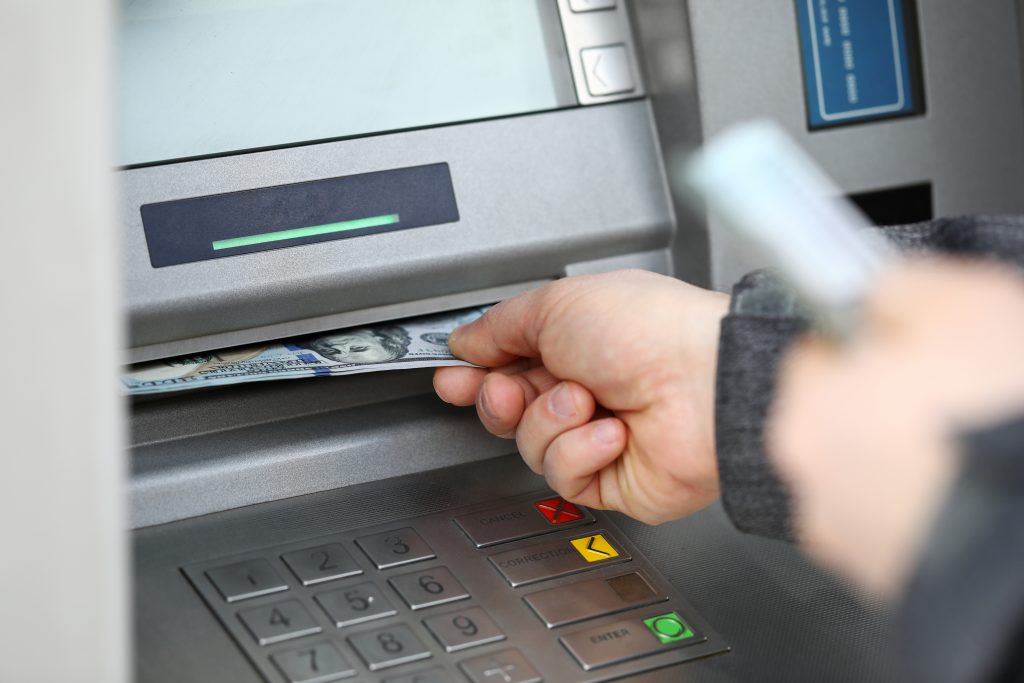ATM liability: 7 critical mistakes that businesses should avoid in cash management strategies

While ATMs still offer convenience and cash accessibility for many customers, they also present a complex web of liabilities that, if mishandled, can lead to substantial financial losses, reputational damage and security breaches.
For any business operating or managing ATMs, understanding and mitigating these liability risks is paramount. Brink’s AMS offers insights and best practices to help avoid cash mismanagement.
-
Mismanaging Discrepancies and Shifting Liability
A fundamental error lies in the handling of cash discrepancies. Traditionally, when ATM cash was managed internally, the responsibility for any variance between expected and actual cash counts fell directly to the business. However, if cash banknotes are no longer handled internally, liability transfers to the cash management companies responsible for the cash-in-transit and cash replenishment services.
This is beneficial for banks and financial institutions as it delegates the operational burden, as well as the financial risk of counting errors, reconciliation and potential internal theft, to the cash management partner or ATM outsourcing provider. Banks and financial institutions must ensure these third-party contracts clearly define the transfer of liability, detailing procedures for discrepancy resolution and ensuring robust audit trails.
-
Overlooking Evolving Cyber Threats
Security remains a top concern for ATM owners as the digital age of banking brings with it sophisticated threats that extend beyond physical ATM attacks.
New technologies such as the XFS4IoT standard is being implemented to enhance ATM security against threats like black box attacks, which entail criminals connecting an external device directly to the ATM’s internal system to gain control and dispense cash. The XFS4IoT standard promises a cloud-friendly, operating system-agnostic API that will enable greater innovation and robust security for end-to-end device protection.
Robust data encryption is paramount for ATM security, making it more difficult for criminals to intercept. Full encryption is required by Brink’s for all ATM transactions and no transaction is allowed on the network without it. There is always the potential of an attempt to get in the middle of the transaction, such as Man in the Middle attacks, but encryption will mitigate this risk. Additionally, an encrypted connection between the mainboard and the dispenser is internal to the ATM to prevent someone physically swapping out components within the shell of the ATM to ‘jackpot’ it – meaning, dispense large amounts of cash rapidly.
These attacks are often facilitated by out-of-date or easily hackable software on the ATM itself. Banks and financial institutions that fail to carry out regular software updates or implement strong network security protocols will be inviting these sophisticated intrusions. Regular penetration testing and vulnerability assessments are also essential.
-
Inefficient Cash Replenishment Methods
The method of cash replenishment significantly impacts accountability and the risk of discrepancies. A common, yet problematic, practice is to ‘add in’ new cash to old inside the ATMs. New currency is mixed with existing notes, making it harder to track precisely what is in the machine at any given time. This mixing can complicate reconciliation, hide discrepancies and make it harder to trace counterfeit notes.
A better approach is cash replenishment, which involves completely removing all existing cash cassettes from the ATM and replacing them with fully stocked, verified cassettes. Taking this a step further, sealed, pre-counted cassettes simplify inventory and reconciliation dramatically. By simply swapping these sealed units, you gain precise knowledge of what cash enters and exits the machine, eliminating the need for manual counting at the ATM itself. This virtually eradicates human error during replenishment, drastically improving accountability and making it much easier to identify and resolve any discrepancies.
-
Neglecting Counterfeit Detection, Especially in Deposit ATMs
With the rise of deposit ATMs, banks now face an increased risk of accepting fake or counterfeit notes. While modern ATMs often have basic counterfeit detection, criminals are creating ever more sophisticated methods. Banks and financial institutions must ensure their ATMs are equipped with the latest software and hardware designed to prevent the acceptance of counterfeit currency, and regular updates to counterfeit detection databases are crucial. The liability for accepting fake currency usually rests with the business, so robust detection is a non-negotiable.
-
Holding Excessive Idle Cash in ATMs
One of the most straightforward yet common mistakes is keeping too much cash or ‘idle cash’ in ATM machines. While it might seem convenient to stock an ATM to its maximum capacity, excessive cash is a huge temptation for criminals. High cash holdings increase the potential payout for a successful attack, making your ATM a more attractive target.
Predictive data analytics and cash forecasting tools provided by cash management partners like Brink’s will help to optimize cash levels and understand your cash position at all times. The goal is to maintain just enough cash to meet demand, minimizing the time cash sits idle and vulnerable. By accurately forecasting your cash needs to optimize your load amounts and load schedules, your ATMs will operate efficiently and cost-effectively.
-
Physical ATM Protection: Beyond the Cash Inside
The physical protection of the ATM itself is as critical as securing the cash notes inside. Ink and dye protection renders notes unusable with ink-dyeing or anti-tamper systems which activate if the ATM is forcefully opened or moved. This significantly reduces the value of stolen cash, making attacks less appealing.
Older or less robust ATM safes can be vulnerable to physical attacks like ram-raids, cutting or explosives. Regular security audits of the ATM’s physical structure, adherence to industry standards and investment in more resilient safe designs are vital. The location of the ATM, its anchoring and surrounding physical barriers also play a key role in its overall protection.
-
Choosing Low-Traffic or Inaccessible Locations
Selecting high-traffic areas like convenience stores, gas stations and entertainment venues tend to yield higher transaction volume. When selecting an ATM location, consider its visibility, competition and whether it’s easily accessible at all times, as low-traffic spots can be costly without the necessary footfall.
Managing ATM liabilities in today’s banking environment demands a proactive and informed approach. By understanding the shifting landscape of responsibility, embracing advanced security protocols and optimizing replenishment methods, banks and financial institutions can significantly reduce their exposure to risk. Moreover, stringent security and compliance measures will boost consumer trust, which translates into more transactions and higher revenue for ATM operators.
Partnering with a reputable and technologically advanced cash management provider like Brink’s is a strategic imperative for safeguarding your assets, reputation and bottom line. To find out how Brink’s AMS can help your organisation, get in touch.







